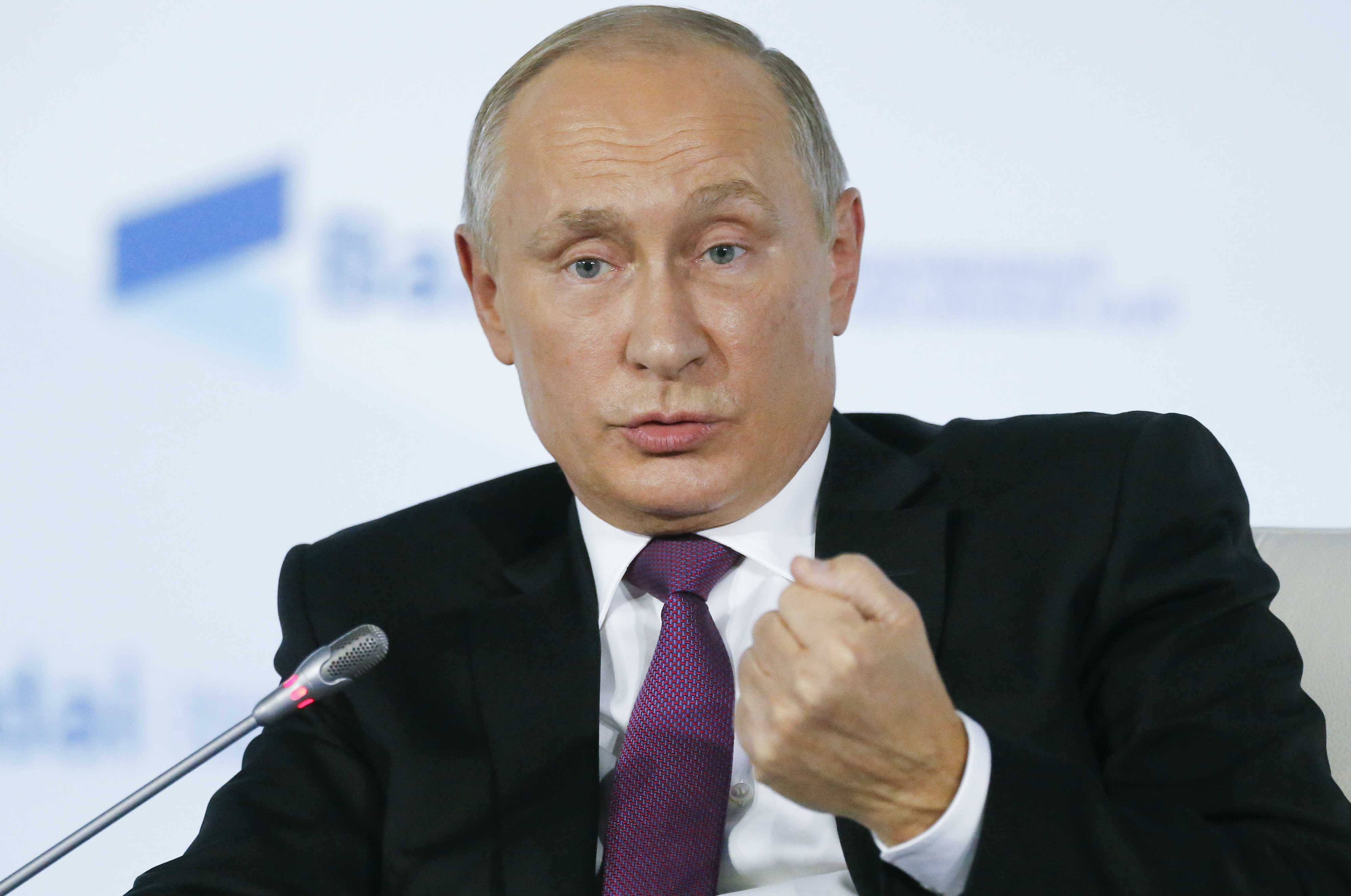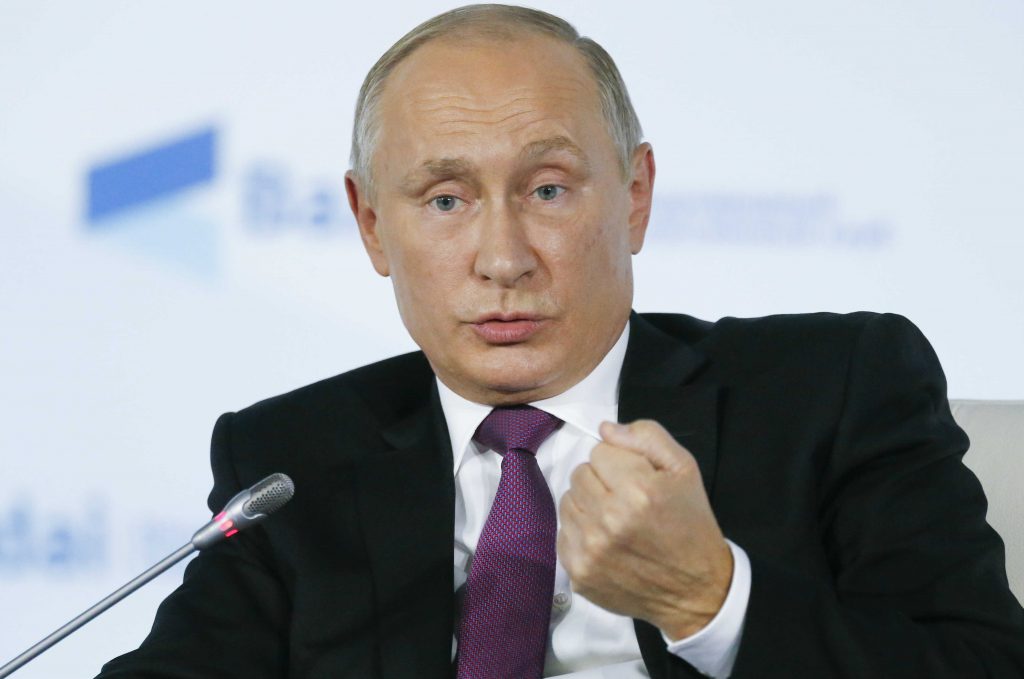 Hydrocarbon exports remain the centerpiece of Russia’s national revival strategy, despite the negative impact of developmental and investment setbacks, OPEC price dumping in traditional Russian export markets, Western sanctions, and a growing push toward energy independence in Eastern Europe. Russia continues to suffer from many of the classic symptoms of Dutch disease: a number of non-energy industries have become sclerotic and uncompetitive, the pursuit of research and development has been eclipsed by the desire to invest in familiar markets—Russia has missed both the 3D and 4D revolutions in seismic reserve detection and is now forced to play catch-up—and the country has found it increasingly difficult to attract much foreign direct investment. However, Russia has managed to avoid many of the more damaging symptoms of the resource trap, maintaining a relatively diversified economy with inflation consistently under 10 percent and a conservative fiscal and monetary policy. As President Vladimir Putin doubles down on aggressive investment in energy infrastructure, previous negative forecasting surrounding the long-term health of the Russian hydrocarbon sector is being called into question. The unpleasant reality is that Moscow will likely be able to leverage its enormous energy exports to project soft power in Europe, especially in Poland, Belarus, Ukraine, and Lithuania, for years to come.
Hydrocarbon exports remain the centerpiece of Russia’s national revival strategy, despite the negative impact of developmental and investment setbacks, OPEC price dumping in traditional Russian export markets, Western sanctions, and a growing push toward energy independence in Eastern Europe. Russia continues to suffer from many of the classic symptoms of Dutch disease: a number of non-energy industries have become sclerotic and uncompetitive, the pursuit of research and development has been eclipsed by the desire to invest in familiar markets—Russia has missed both the 3D and 4D revolutions in seismic reserve detection and is now forced to play catch-up—and the country has found it increasingly difficult to attract much foreign direct investment. However, Russia has managed to avoid many of the more damaging symptoms of the resource trap, maintaining a relatively diversified economy with inflation consistently under 10 percent and a conservative fiscal and monetary policy. As President Vladimir Putin doubles down on aggressive investment in energy infrastructure, previous negative forecasting surrounding the long-term health of the Russian hydrocarbon sector is being called into question. The unpleasant reality is that Moscow will likely be able to leverage its enormous energy exports to project soft power in Europe, especially in Poland, Belarus, Ukraine, and Lithuania, for years to come.
The global price shock of crude oil that began in 2014 exposed enormous structural flaws in Moscow’s energy-led economic growth initiative, as the ruble plummeted against the dollar and the economy contracted violently. With the advent of the American shale boom, traditional Russian energy markets began to look for other sources of hydrocarbons. Analysts were quick to forecast the slow decline of the Russian petrostate and the eventual end of its ability to project power through pipeline politics in Eastern Europe. However, long-term economic predictions for the future of Russian oil and natural gas exports look increasingly bullish. The decline in European gas output (predicted to fall from 300 to 200 bcm by 2030) will more than outweigh the decreasing natural gas demand (expected to fall from 600 bcm to 500 bcm by 2030). Though domestic European energy demand is lower than in previous years, European energy production will drop even more, so major gas exporters like Russia won’t lose out even though Europe needs less gas.
Nord Stream 2 will also serve to undercut EU efforts toward energy independence. European gas imports are unlikely to drop off and the efficacy of Russian energy diplomacy on the continent is likely to remain intact. Moscow’s ability to leverage its energy exporter status through pipeline shut-offs, node disruption, and aggressive price negotiation will not be significantly degraded despite the push for energy independence and lower LNG consumption. Russia’s energy-based soft power is here to stay, at least for the foreseeable future.
Nord Stream 2 is likely to be one of the central lynchpins of Russia’s strategy as it struggles to maintain its stranglehold on Western Europe. Despite strong opposition from EU and American politicians and flat European energy demands, the proposed pipeline has received $10.3 billion in funding and construction has already begun. Upon completion, Nord Stream 2 will double the capacity of Russia’s mainland European pipelines while allowing Russia to avoid pumping through Ukraine, which stands to lose nearly $1 billion annually in gas conveyance fees. With the potential to raise Russia’s share of Germany’s gas market to more than fifty percent and dominate EU energy imports, the Nord Stream 2 project will increase the Kremlin’s ability to pressure vital US allies through its traditional supply manipulation tactics. Western Europe will be even more vulnerable to Russian influence despite half-hearted attempts to diversify its sourcing of oil and natural gas.
Russia has begun using its energy-based influence to undermine European support for US and NATO-backed agendas. Hungary, Italy, France, and Germany were targets of aggressive Russian soft power efforts to undermine Western sanctions following the illegal annexation of Crimea. Nord Stream 2 will serve to further divide European countries eager to limit Russian influence and those seeking cheap energy. With increased energy dependence, even traditional US allies will find it difficult to back sanctions against Russia in the face of harsh economic realities.
Russia’s energy future is bad news for Eastern Europe as well. Nord Stream 2 will pump gas supplies directly to mainland Europe while bypassing Russia’s other pipelines nodes in Ukraine, giving Moscow the ability to limit or shut down supplies to Ukraine without affecting Western European energy markets. The decoupling of natural gas shipments will allow Russia further leverage to play pipeline politics with Eastern Europe while simultaneously lowering the economic cost to Germany and other major gas importers. Moscow’s practice of implementing energy cut-offs to Ukraine and other post-Soviet states has been well-documented; gas was cut off in 2006, 2008, and 2015, and aggressive changes in pricing continue to be an essential part of the Kremlin’s playbook. With increased energy dependence in Western Europe and massive pipeline projects in the works, the Kremlin’s tactics will likely remain effective well into the future.
Matthew Finkel is a student at Wesleyan University. He recently served as a Foreign Affairs Intern with the US Department of State’s Bureau of Conflict and Stabilization Operations.
Image: Russia's President Vladimir Putin speaks during a session of the Valdai Discussion Club in Sochi, Russia October 19, 2017. REUTERS/Alexander Zemlianichenko/Pool
